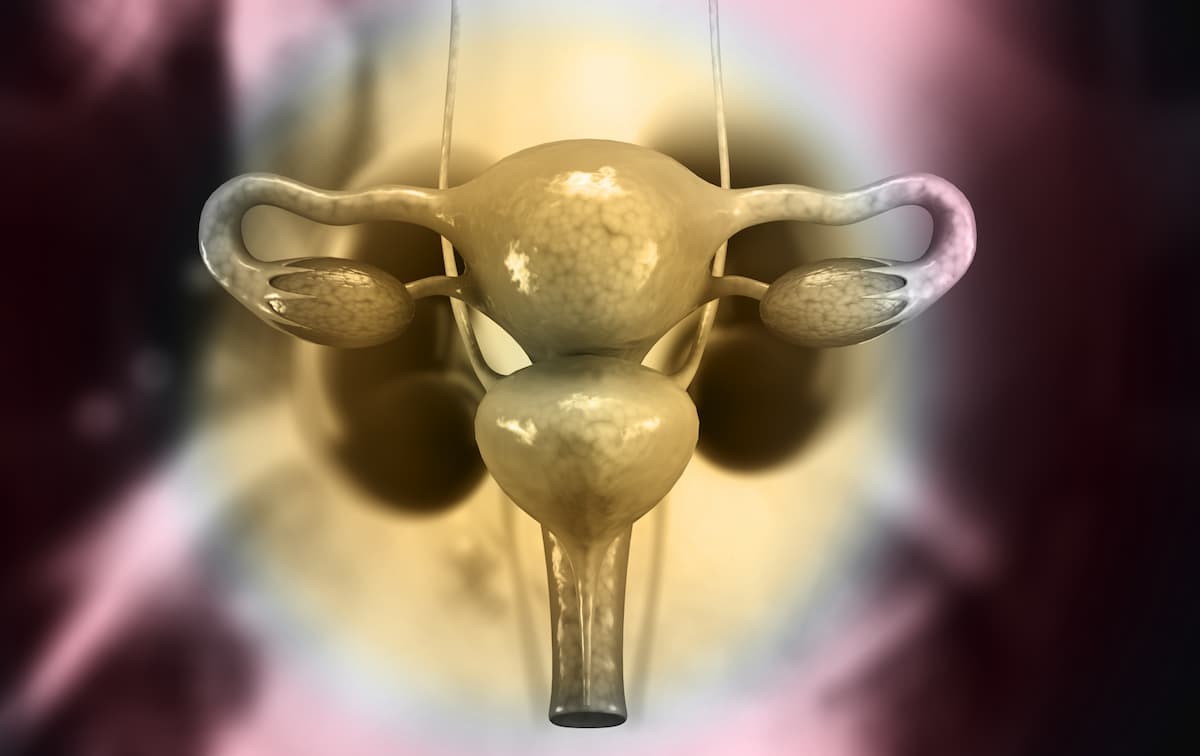Nivolumab/Ipilimumab Improves Responses in Ovarian/GYN Clear Cell Carcinoma
A survival benefit was observed when nivolumab and ipilimumab were combined to treat ovarian or gynecologic clear cell carcinoma.
"Immunotherapy represents an important and available treatment option for patients with these rare and aggressive malignancies,” according to Don S. Dizon, MD, FACP, FASCO.

The combination of nivolumab (Opdivo) plus ipilimumab (Yervoy) produced greater responses and survival outcomes vs nivolumab monotherapy for patients with ovarian or gynecologic clear cell carcinoma, according to results from the phase 2 BrUOG 354 trial (NCT03355976) presented at the 2024 American Society of Clinical Oncology (ASCO) Annual Meeting.
In the combination arm, a complete response (CR) was noted in 16.7% of patients vs 0% in the monotherapy arm, and a partial response (PR) occurred in 16.7% vs 14.3%. The combined CR and PR rate was 33.3% vs 14.3%. Additionally, stable disease was observed in 33.3% vs 35.7%, disease progression in 33.3% vs 50%, and the median duration of response was 22.4 months ± 11.8 months vs 30.6 months ± 4.5 months.
The median progression-free survival (PFS) in the combination arm was 5.6 months (95% CI, 1.6-29.1) vs 2.2 months (95% CI, 1.2-3.4) in the monotherapy arm. The median overall survival (OS) was 24.7 months (95% CI, 5.9-not reached) vs 17.3 months (95% CI, 2.1-42.7).
“Immunotherapy represents an important and available treatment option for patients with these rare and aggressive malignancies,” Don S. Dizon, MD, FACP, FASCO, director of Pelvic Malignancies Program and Hematology-Oncology Outpatient Clinic at the Lifespan Cancer Institute; director of Medical Oncology at Rhode Island Hospital; and founder of the Oncology Sexual Health First Responders Program, said during the presentation. “There were no new safety signals identified among [patients] with gynecologic clear cell cancer treated with immunotherapy.”
A total of 44 patients were enrolled and assigned to either the nivolumab plus ipilimumab arm (n = 30) or the nivolumab monotherapy arm (n = 14). In the monotherapy arm, patients were given nivolumab at 240 mg intravenously every 2 weeks, with 1 cycle lasting 2 weeks. In the combination arm, nivolumab was given at 240 mg intravenously every 2 weeks plus ipilimumab at 1 mg/kg intravenously every 6 weeks, with 1 cycle lasting 6 weeks.
Data cutoff was December 31, 2023, and the median follow-up was 11.3 months. Scans were completed every 8 weeks, and there was no limit on the treatment duration. Patients were treated until disease progression or unacceptable toxicity.
Patients 18 years and older were eligible for treatment if they had non-renal clear cell carcinoma stratified by ovary or extra ovarian, progressive disease after 1 or more prior treatments, no limit on the lines of therapy given, and no prior exposure to immunotherapy.
The primary end point was overall response rate (ORR), with secondary end points being PFS, OS, and adverse effects (AEs). The exploratory end point was molecular characteristics for response or non-response. The Simon’s 2-stage minimax design was a true ORR of 30% and a poor ORR of 10%, with 86% power and alpha = .03.
Enrollment for this study did occur during the COVID-19 pandemic, with the first patient enrolled in June 2018 and the last in April 2023. Originally, 46 patients had enrolled, and 2 withdrew with informed consent. Dizon noted that decentralization was key during the pandemic.
Overall, the median age was 57 years old, 81.2% had ovarian cancer, 13.6% had uterine cancer, and 4.5% had other cancers. A total of 75% of patients were White, 9% were Black, 4.5% were Asian, and 11.4% did not answer. Regarding ethnicity, 11.4% were Hispanic, 77.3% were not Hispanic, and 11.4% did not answer.
In the combination arm, all-grade adverse effects (AEs) included fatigue (22.5%), pruritus (26.7%), and hypothyroidism (20.0%). Grade 3/4 AEs included elevated amylase (5.0% vs 2.5%) and elevated lipase (5.0% vs 7.5%).
In the monotherapy arm, all-grade AEs included hypothyroidism (35.7%) and maculopapular rash (14.2%). Grade 3 AEs included thromboembolism (7.1%) and diarrhea (7.1).
One patient was taken off the study due to grade 3 creatinine increase. A biopsy of the kidney was conducted, and interstitial nephritis consistent with drug reaction was found. The patient was treated with steroids and had a PR at a CT scan 6 weeks after treatment.
Reference
Dizon DS, Matthews CA, David SM, et al. Final results of BrUOG 354: a randomized phase II trial of nivolumab alone or in combination with ipilimumab with ovarian and extra-renal clear cell carcinomas. J Clin Oncol. 2024;42(suppl 17):LBA5500. doi:10.1200/JCO.2024.42.17_suppl.LBA5500
Newsletter
Stay up to date on recent advances in the multidisciplinary approach to cancer.